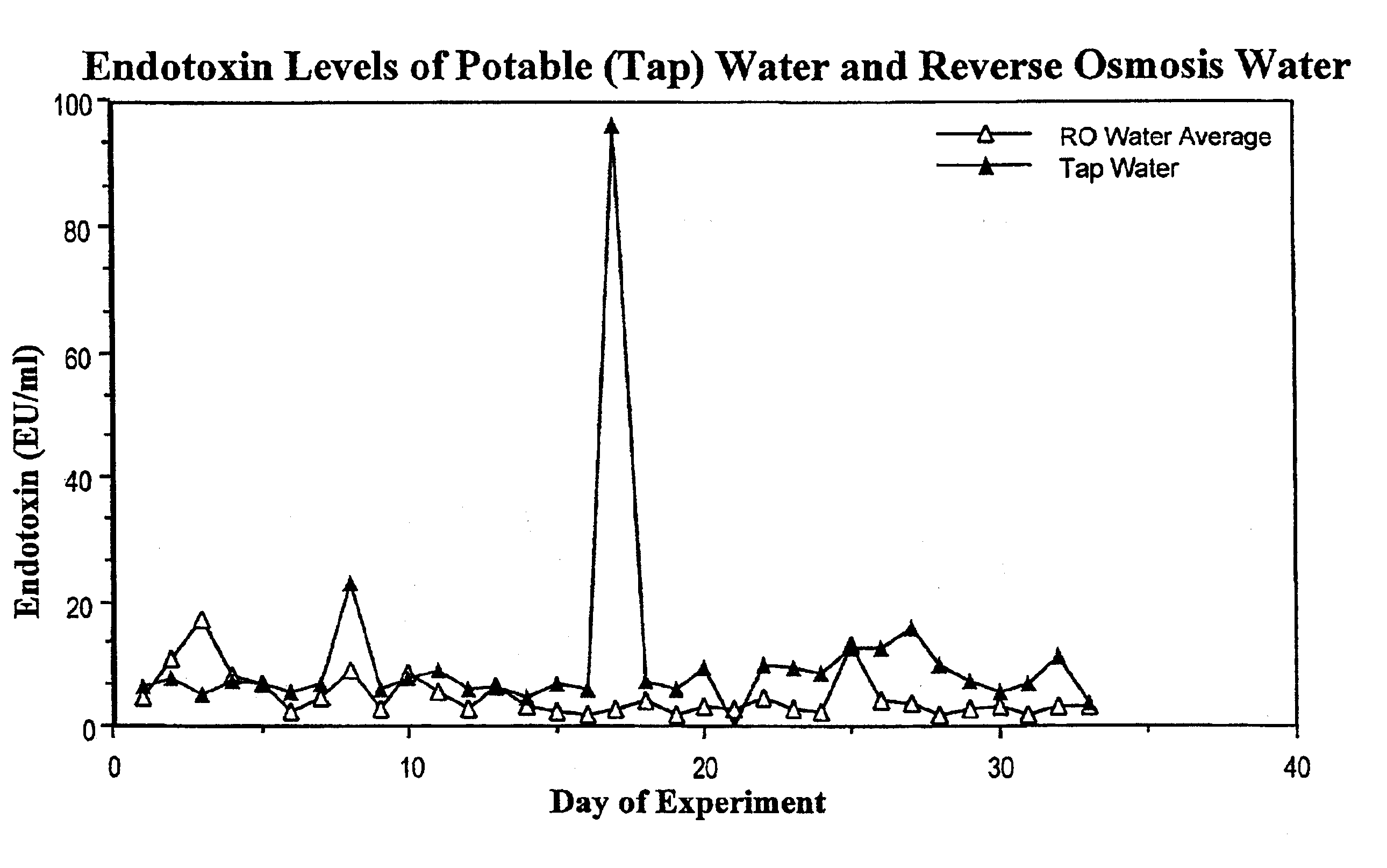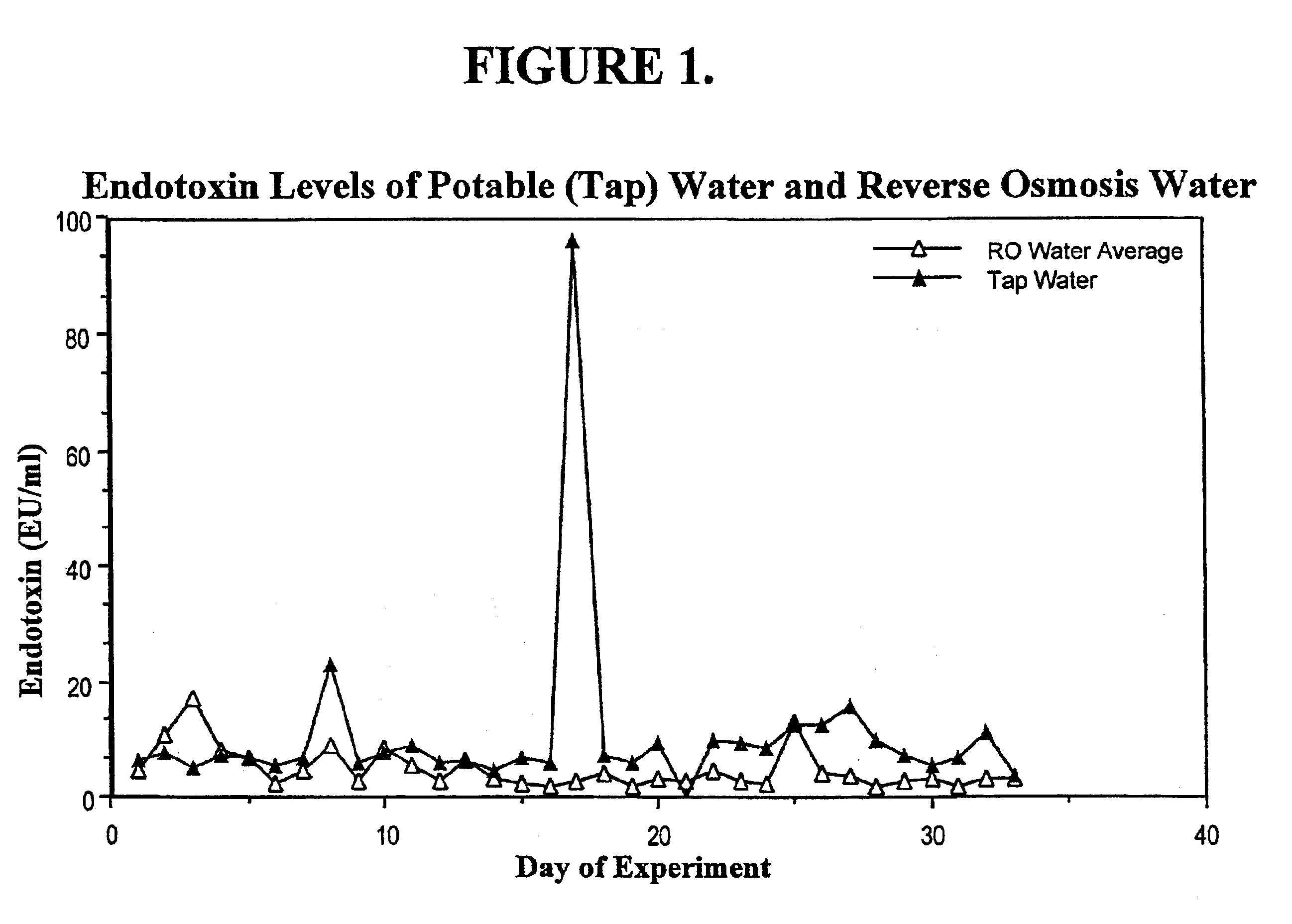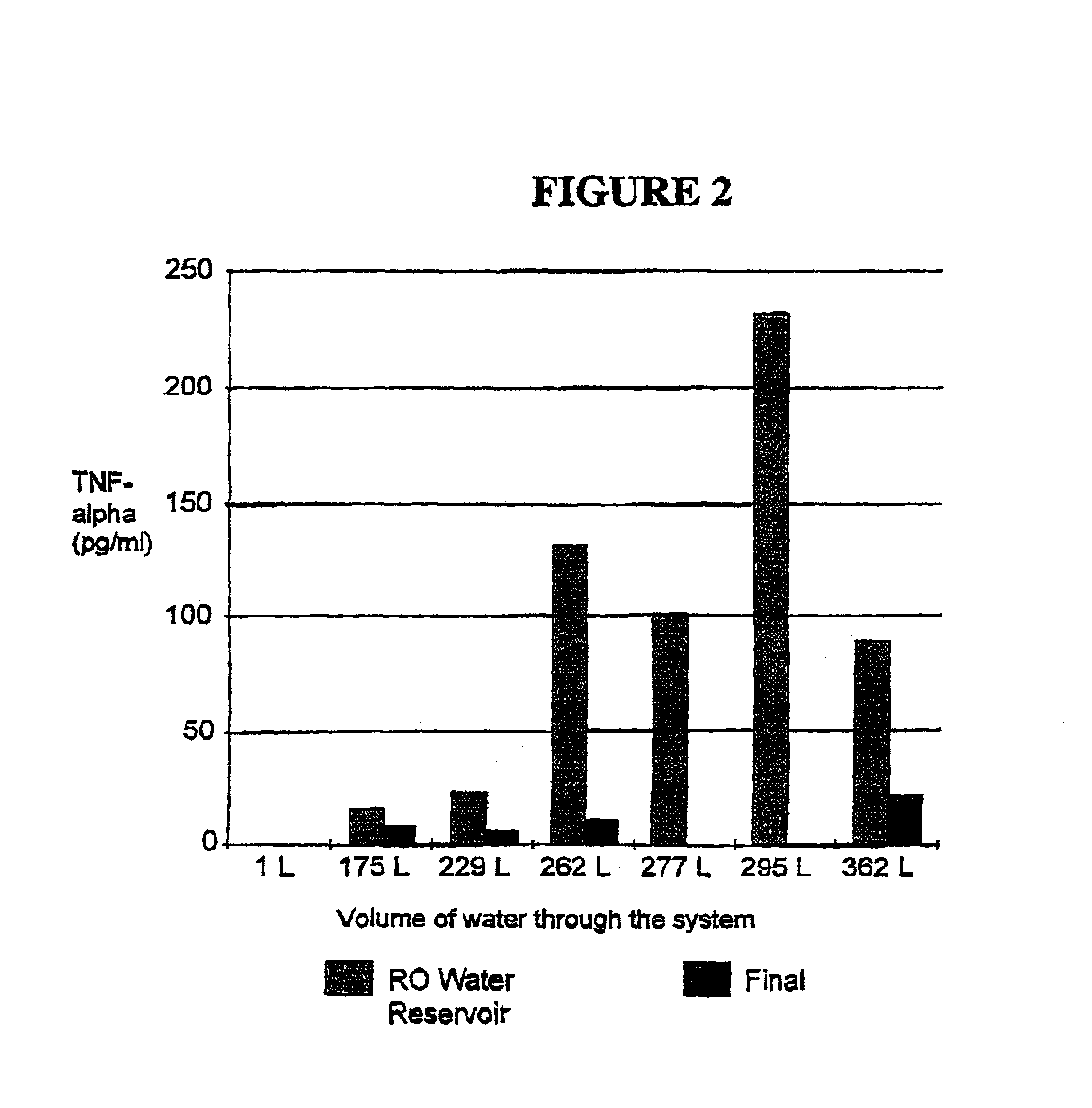Methods for the on-line, on-demand preparation of sterile, water-for-injection grade water
a technology of sterile water and on-demand preparation, which is applied in the field of online, on-demand preparation of sterile water and water for injection grade water, can solve the problems of increasing the chance of endothelial cell injury, arteriosclerosis and inflammatory problems, and inadequate use of these therapeutic modalities, so as to reduce contaminant levels and reduce costs
- Summary
- Abstract
- Description
- Claims
- Application Information
AI Technical Summary
Benefits of technology
Problems solved by technology
Method used
Image
Examples
example 2
Preparation of Human Peripheral Blood Mononuclear Cells:
Approximately 25 ml blood was drawn from healthy volunteers. The mononuclear cells were isolated by Ficoll-Hypaque gradient centrifugation. After the separation step about 25.times.10.sup.6 cells were obtained. The cells were resuspended in 10 ml PBS containing 1% BSA. The cells were adhered to a 6-well microtiter plate after resuspension in 20% fetal calf serum (FCS), RPMI-1640 at 2.times.10.sup.6 cells / ml for 5 h at 37.degree. C. in a 5% CO.sub.2 atmosphere. After mild agitation the medium with non-adherent cells was removed, the cells counted and the number of adherent cells determined. Then 2 ml RPMI-1640 with 20% FCS supplement and 100 U / ml PenStrept solution were added followed by the necessary stimulant as endotoxin solution or the sterile filtrate, and ultrafiltered Pseudomonas supernatants as well as RO water samples. Each sample as well as the controls were incubated for 1.5-16 hr at 37.degree. C. in a 5% CO.sub.2 atm...
example 3
Sandwich ELISA to Quantitate TNF-.alpha. Induction in Samples:
For the assays, the TNF-.alpha. ELISA-kit (Cell Sciences, Norwood, Mass.) was used. The readout is at 450 nm. The assay was performed following the manufacturer's directions.
example 4
Preparation of the Sterilizing Column:
The Q Ultraflow HX resin was packed into a 50 ml column and treated with 0.1 M NaOH overnight followed by a wash with sterile LAL water.
PUM
| Property | Measurement | Unit |
|---|---|---|
| diameter | aaaaa | aaaaa |
| diameter | aaaaa | aaaaa |
| conductivity | aaaaa | aaaaa |
Abstract
Description
Claims
Application Information
 Login to View More
Login to View More - R&D
- Intellectual Property
- Life Sciences
- Materials
- Tech Scout
- Unparalleled Data Quality
- Higher Quality Content
- 60% Fewer Hallucinations
Browse by: Latest US Patents, China's latest patents, Technical Efficacy Thesaurus, Application Domain, Technology Topic, Popular Technical Reports.
© 2025 PatSnap. All rights reserved.Legal|Privacy policy|Modern Slavery Act Transparency Statement|Sitemap|About US| Contact US: help@patsnap.com



